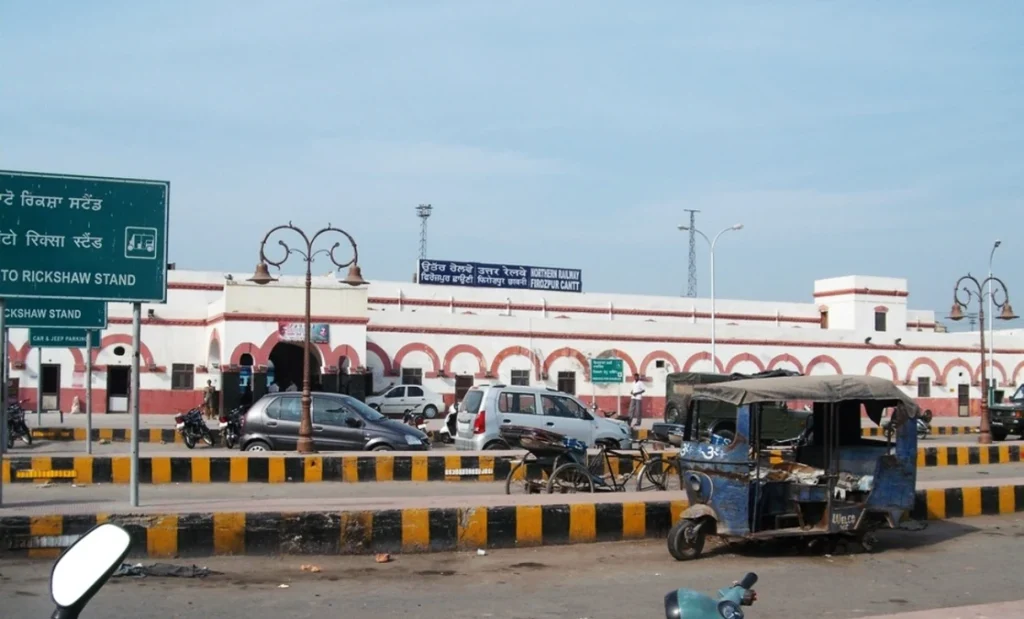Discover Firozpur, Punjab—a land of bravery, rich history, and heritage. Explore its war memorials, vibrant culture, and timeless landmarks today!

Explore Firozpur: Land of Heroes, History & Heritage!
Firozpur, a district located in the northwestern part of the Indian state of Punjab, is a region steeped in history and cultural heritage. Spanning an area of approximately 5,305 square kilometers, the district is named after Firoz Shah Tughlaq, a ruler of the Tughlaq dynasty during the 14th century. Known for its significant contributions to the state’s agricultural and historical landscape, Firozpur District holds a special place in Punjab’s narrative.
With the Sutlej River meandering through its fertile plains, Firozpur has historically been an agrarian economy. The district’s rich soil, coupled with an extensive irrigation network, makes it a vital contributor to Punjab’s agricultural production. Wheat, rice, cotton, and sugarcane are some of the major crops cultivated here, supporting both the local populace and contributing to the state’s food security.
Firozpur also holds great historical significance. The town of Firozpur itself has witnessed numerous historical events. It was a prominent center during the British colonial period and served as an important military and administrative base. The famous Firozpur Cantonment played a vital role during the Anglo-Sikh wars and the Indian Rebellion of 1857. The district houses memorials and landmarks commemorating these events, offering a glimpse into its historical importance.
Culturally, Firozpur is a melting pot of traditions. The district celebrates various festivals with enthusiasm, reflecting the vibrant and diverse cultural fabric of Punjab. Baisakhi, Diwali, and Gurupurabs are celebrated with fervor, bringing communities together in joyous revelry. The traditional Punjabi dance forms, like Bhangra and Giddha, are an integral part of the cultural landscape, resonating with the spirit of the locals.
In terms of infrastructure, Firozpur is well-connected by road and rail networks. The Firozpur Junction serves as a crucial railway hub, facilitating both passenger and freight movement. The district’s roadways link it to major cities within Punjab and neighboring states, fostering trade and commerce.
While agriculture remains the backbone of the economy, Firozpur is also witnessing growth in other sectors. Small-scale industries and trading activities are gradually gaining prominence. The district administration’s efforts to promote entrepreneurship and skill development are contributing to the economic diversification of the region.
Education and healthcare infrastructure are also steadily improving in Firozpur District. Schools and colleges are providing quality education, while healthcare facilities are becoming more accessible to the local population.
In conclusion, Firozpur District is a land where history, agriculture, and culture converge. Its fertile fields, historical landmarks, and cultural celebrations paint a vibrant picture of Punjab’s heritage. As the district moves forward, balancing tradition with modernity, it continues to play a crucial role in shaping the identity of both Punjab and India.
Famous Places in Firozpur District
Firozpur District boasts several famous places that showcase its historical, cultural, and religious significance. From historical landmarks to religious shrines, here are some notable attractions in the district:
Saragarhi Memorial Gurudwara: This iconic Gurudwara commemorates the Battle of Saragarhi, a historic event where 21 Sikh soldiers valiantly defended their post against a large number of enemy forces. The Gurudwara stands as a tribute to their bravery and sacrifice.
National Martyrs Memorial: Situated in Firozpur Cantonment, this memorial honors the soldiers who fought in various wars, including World Wars I and II, and the Indo-Pak wars. The eternal flame at the site symbolizes the courage and sacrifice of these heroes.
Firoz Shah Palace Complex: Built during the reign of Firoz Shah Tughlaq, this historical complex includes a palace, a mosque, and a baoli (stepwell). The palace’s architecture and design offer insights into the region’s medieval history.
Anglo-Sikh War Memorial: Dedicated to the soldiers who participated in the Anglo-Sikh wars, this memorial is located in Firozpur Cantonment. It features sculptures and plaques that narrate the historical events of the wars.
Firozzpur Cantonment: This cantonment area has played a pivotal role in various historical conflicts. It houses important military establishments, including barracks, offices, and training facilities.
Gurdwara Shaheed Ganj Sahib: This Sikh shrine holds religious significance as it is dedicated to the memory of Guru Gobind Singh Ji’s two elder sons, Sahibzada Baba Zorawar Singh and Sahibzada Baba Fateh Singh. It’s a place of reverence for Sikhs.
Hussainiwala Border: Situated on the banks of the Sutlej River, this is the final resting place of freedom fighters Bhagat Singh, Rajguru, and Sukhdev. The spot is a symbol of their sacrifice for India’s independence.
Harike Wetland: This extensive wetland is located at the confluence of the Beas and Sutlej rivers. It is a crucial habitat for migratory birds and supports diverse aquatic life, making it a paradise for birdwatchers and nature enthusiasts.
Sodal Mandir: A revered temple dedicated to Lord Sodal, it attracts devotees seeking blessings and offering prayers. The temple hosts an annual fair that draws a large crowd.
Indo-Pak Border: Firozpur is close to the international border with Pakistan. Visitors can witness the daily retreat ceremony at the Wagah-Attari border, a unique and patriotic experience.
These famous places reflect Firozpur District’s historical legacy, religious diversity, and the valor of its people. Whether it’s paying homage to heroes, exploring historical architecture, or experiencing cultural festivities, Firozzpur offers a rich tapestry of experiences for every visitor.
Read More :-